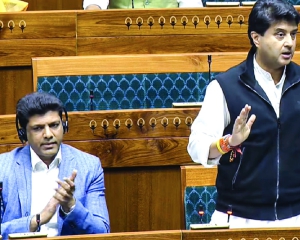The Telangana High Court has corrected gender-based inequality rooted in religious personal laws — an inequality that contradicts Article 15 of the Indian Constitution, which forbids discrimination on the basis of religion, sex or caste
In recent weeks, the Telangana High Court has significantly corrected a major inequality, which happens to be prohibited by the Constitution’s Article 15, i.e., discrimination on the grounds of sex, religion, caste, etc.
The State shall not discriminate against any citizen on the grounds only of religion, caste, sex, place of birth, so states our Constitution. For those who were born much later, it bears iteration that since 1950, when the national document was adopted, discrimination between every Muslim man and every Muslim woman, ironically sanctioned by the statute, has been in practice.
This has continued for decades and is still in force. Defending the Hindu Code Bill during the parliamentary debate on the matter in 1955, when it was passed to become a law in the form of the Hindu Marriage Act — while completely ignoring a similar demand to reform the Muslim Personal Law and bring in a Uniform Civil Code — Jawaharlal Nehru, the country’s first Prime Minister, had said:
“Well, I should like a Civil Code which applies to everybody, but wisdom hinders. If the member or anybody else brings forward a Civil Code Bill, it will have my extreme sympathy. But I confess I do not think that at the present moment time is ripe in India for me to try to push it through. I want to prepare the ground for it.”
(Uniform Civil Code and Gender Justice by Dinanath Raina, pp. 1–2) This statement of Nehru was the first blunder — of both omission and commission — which made the Uniform Civil Code the victim of perverse secularism and emboldened the perverted communalists to ensure that this constitutional commitment is not enforced. Surely, Nehru was aware that it was the strong political will of leaders like KM Munshi and Dr BR Ambedkar that ensured Article 44 was pushed through.
As things stand today, a Muslim man can divorce or give talaq in a maximum course of three months.
Whereas, his wife hitherto did not have a right to talaq. If a wife was harassed to the wall, she could move for what is called khula — first by returning the mehr she received, if she did receive any, to her husband, and then proceed with the long procedure required by the Sharia law of khula, wherein several members of the clergy usually have the final say.
In the bargain, the husband would have ample opportunity to intervene officially or behind the scenes. So far, in my experience, I have come across nobody who has witnessed khula taking place successfully, amicably, and in favour of an unfortunate lady. Does this not mean that the procedure for khula must be so cumbersome that disgruntled women do not have the gumption to try to obtain liberty?
Think about it; the very existence of polygamy is ultra vires Article 15 of the Constitution.
For the simple reason that the Sharia does not permit equal rights to women and allows a man to have four wives — but not vice versa. How is it that it did not occur to anyone to challenge polygamy in a court of law?
How blasé is the fact that an obscurantist body like the All India Muslim Personal Law Board — or for that matter, medieval religious laws like Sharia — exists in modern, 21st-century India?
How can polygamy, itself a blatant mockery of Article 15 of the Constitution, be plugged? I had, some years ago, written an article pleading that Articles 25 to 30 of the Constitution violate Article 15 in the matter of equality.
As we have quoted above, Article 15 clearly says there shall be no discrimination on the grounds of religion — meaning that all religions will be equal before the State. How, then, were we tolerating the very existence of these six Articles?
Article 30 also states that all minorities shall have the right to establish and administer educational institutions of their choice, including the acquisition of property without any special permission.
Whereas, the majority community cannot think of starting any school without obtaining the sanction of the State education department. One would like to know how many schools or colleges Muslims have founded in the last 75 years, and how many have been opened by Hindus — from primary schools to universities?
If this information is made available on an all-India basis, one would hear howls of sowing discord among communities — i.e., spreading communal disharmony. A number of the clauses of the Constitution were drafted during 1946–47 to persuade the Muslim politicians of the day not to insist on the Partition of the country.
Thereafter, even though Partition did take place and became a reality, these very Articles were smuggled into the Constitution.We are encouraged to sing Vande Mataram, which is a song stirring enough to arouse in most young people an emotion of nationalism.
However, this emotion will become a lasting sentiment provided, over time, only if all Indians are enabled in their souls to breathe together. Instead, as we have said above in this article, the current state of affairs only discourages us from doing so. It only drives Indians to act separately and randomly.
(The writer is a former Member of Rajya Sabha and a well-known columnist. Views are personal)



























